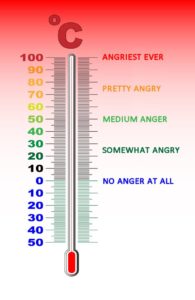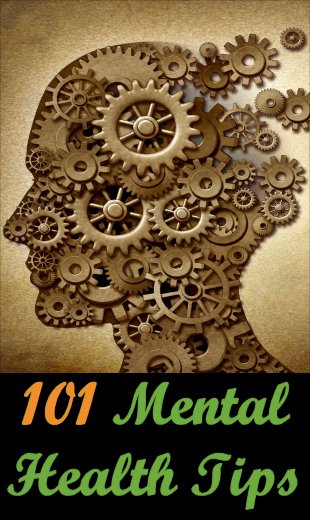16 Anger Management Tips For Kids
When it comes to helping children deal with anger, many of the tips in my main anger management article are probably not going to work.
With kids, you need different strategies, for the most part, and that’s what this article is all about.
Of course, some tips will be more or less applicable depending on how old your child is, and some of these are aimed at the children, while others are aimed at the parent or guardian (and which therefore supplement this article).
But first, how do you tell if your child needs help in managing anger? These are some of the telltale signs to look out for:
- Alienating adults.
- Damaging property on a regular basis.
- Hitting people (other than brothers and sisters) after the age of six.
- Hurting animals or younger children to whom they are not related
- Inability to control aggressive impulses.
- Losing friends (frequently).
- Playing the victim rather than recognizing their own role in creating the situation.
- Regular explosive outbursts.
- Self-harm (whether it’s threatened or actual).
- Self-hate.
- Vengeful.
Of course, in isolation, the above may not mean anything significant, but if you see several of these signs, and they occur frequently, then you may need to step in and deal with a possible problem.
Acknowledgement
Anger is a natural reaction to events, so there is no point denying that your child is angry.
It is better to acknowledge their emotion, which can help reduce it, rather than ignoring it which can often make their anger worse.
In the same vein, don’t tell them to stop crying. Instead, acknowledge the reason why they are crying and tell them, for example, that it would make you cry to. This approach helps build trust.
Anger Thermometer

This is a great tool to help children gain an understanding of their anger level.
It can go from 0 at the bottom, to 10 at the top, or 0 – 100 – whatever works best for you.
If you want to apply labels to some of those levels, you can do that, but it’s not strictly necessary.
If your child is too young to create this for themselves, you can do it for them (or, at least, help).
Once you’ve made your anger thermometer, you should ask your child how his body feels at different levels.
For example, at level 0, he or she may say they feel happy and are smiling or laughing.
By level 5 (or 50 in the example shown), they may say their smile has gone and they are starting to clench their fists.
And by level 10 (or 100), they may say they feel like they’re about to explode, or turn into the Incredible Hulk.
Over time, this can help your child recognize the danger signs and try other strategies to prevent full-blown anger from developing. And remember, anger rarely happens by itself – there is usually at least one other emotion (e.g. fear, frustration, pain) that is also present, the detection of which can also help inhibit anger.
Be A Role Model
As a parent, you will undoubtedly feel anger frequently, and you may not always respond in the way you’d like.
That’s OK if your children see it, but you need to explain to them how you felt, what made you feel that way, and what you should have done differently.
Talking about these issues shows your children that they are allowed (and encouraged) to discuss their own feelings.
Create A Safe Space
While I talk elsewhere in this article about not leaving angry children alone, you can still create a safe, soft area (e.g. in a corner of your living room), where they can crash safely until they calm down.
Here are a few items you could put in their safe space:
- Bean bags
- Floor mats
- Pillows and cushions
- Soft toys
If some of these have different textures and designs, so much the better.
Define Acceptable And Unacceptable Behaviours
While nobody can help feeling angry, everybody, including children, should know which responses are acceptable and which aren’t.
You’re not saying they shouldn’t feel angry – but you do need to make it clear that certain responses (e.g. breaking things, hitting somebody or something, throwing things) are never OK, and that there will be consequences (which you should also detail).
In other words, they need to understand the difference between emotions and feelings, and behaviours.
And if they break these rules, you need to follow through, consistently, with the consequences you told them about earlier (e.g. removing TV-watching privileges, temporarily confiscating their favourite toys).
Empathize
You need to listen to what your child is saying (e.g. about why they are angry) before responding.
This will help them feel listened to, which by itself can calm them down rather than putting them on the defensive.
Have Them Draw Their Anger
To help your children understand where their anger affects them most, have them do a drawing of their body, and then colour in the parts where they feel their anger.
Common areas include the hands and head (and in particular, the mouth area).
Help Them Identify Triggers
The better they can understand what triggers their anger, the better they will become at preventing outbursts.
The idea is to create a master checklist, and then when they feel angry (or after they have calmed down again), they can check off what triggered that particular outburst.
Here are a few common ones to get you going, but you should work through this with your children so that the checklist is specific to them:
- Being bullied.
- Being hungry.
- Being ignored.
- Being teased.
- Being told to get ready for school.
- Being told to get up.
- Being told to go to bed.
- Having a toy taken away.
- Having the TV / video turned off.
- Having to do homework.
- Losing in a game.
- Losing or breaking a toy.
Once you have a master checklist, you can either have a few copies made, or just print off on as and when you need one.
Never Give In
When your child throws a temper tantrum, say, and you eventually give in, you are only teaching them that acting out is an effective way to get what they want.
Physical Activity
In order to provide an acceptable outlet to their anger and frustration (in a way that does not involve any of the unacceptable behaviours that you have discussed with your children), you can encourage them to work out their anger in other ways, including:
- Doing an “angry” dance (to music).
- Stomping their feet.
- Tearing a piece of paper into tiny shreds.
Relaxation Methods
Even with children, techniques such as counting to ten, or controlled breathing, can be helpful.
They are not difficult to learn, and they are both very effective.
Remain Calm
However upset or angry your child is, you need to be their safe place, so getting all emotional and irate yourself is not going to help them in the long term.
When your children see you become angry too, they can become afraid, and that’s not what you want at all, so try to de-escalate the situation and their feelings.
Sit With Them
While time-outs may be appropriate in some situations, when they are angry, it is better if you sit with them while you talk about how they are feeling, and incorporate some of the other techniques discussed in this article.
Stress Balls
Those squishy balls that are designed to help us calm down when we’re feeling stressed out can work well with children too.
What you can do is give one to your child and keep one for yourself, and then you can squeeze them together. That way, they can see how you use them, and how they can help them relax again (even if that means a bit of play-acting on your part).
Teach Your Child About Feelings
When children cannot put their feelings into words, they are more likely to lash out and throw tantrums instead.
So, you need to help them recognize and describe their feelings – not just negative ones like fear and anger and worry, but positive ones too, like happy.
The Person Is Not The Problem, The Problem Is The Problem
This is a quotation by psychotherapist Michael White, which is getting at the importance of making sure your child does not think he or she is the problem (e.g. they are not intrinsically a bad person).
You need to externalize the problem, so that your child sees it is separate from who they are as a person.
One way to do this is to have your child draw what they think their anger looks like, and then give it a name.
When they see that their anger is outside of them, they will be better able to deal with it.
Conclusion
Teaching children what anger is, what it feels like, what often causes it, and how to manage it effectively, from as early an age as possible, will help them become well-balanced adults.
Yes, it will be frustrating and worrying for you, as a parent (or guardian), but this is but one of many aspects of parenting. And by helping your children to cope with anger, it will also help you too – since you need to set a good example to your kids.
Additional Resources
These are suggestions for those who wish to delve deeper into any of the above:
- Anger Management For Kids
- Emotional Intelligence In Children
- Find An Anger Management Therapist (US Only)
- Just Listen







